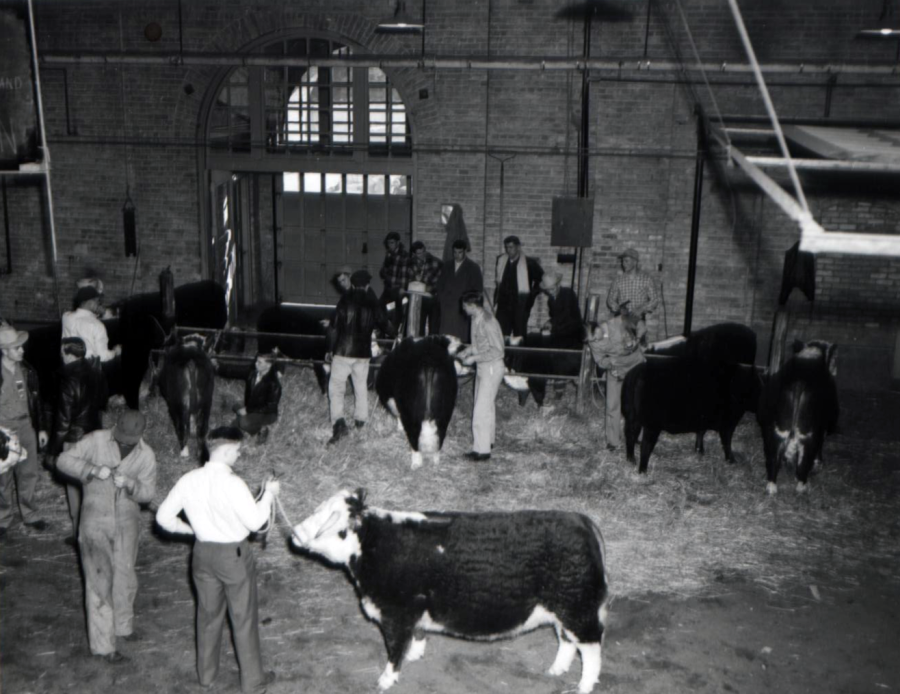Little International through the decades
A beef cattle during Little I, circa 1940-41, took place at the livestock judging pavillion. It was where the South Dakota Agricultural Heritage Museum is now located.
March 28, 2023
Little International has changed over time from then to now. Little I started in 1921 as a small competition, and it grew to be so much more.
Little I was modeled after the Chicago Livestock Expo. It was held for the first time in 1921 where the Agricultural Heritage Museum is today.
Events have changed over the years. From 1924-1941, they added poultry, wool judging, and meat cutting. In 1948, they added the potato division and machinery exhibit, then in 1949, they added economics. From 1955 to 1957, they added dairy product judging, farmstead planning and the Wildlife Conversation Club.
“So you can see that this kind of kept growing and it still changes from year to year what they have in terms of the competition,” said Carrie Van Buren, collections coordinator at the Agricultural Heritage Museum.
Little I has not always been in the same location as the show continued to grow.
“The show kept growing, and it became more popular not with just the students but with the audience that they were attracting too,” Van Buren said.
From 1921-1942, Little I was in the Agricultural Museum building. Then in 1942, it was moved to The Barn. Then when the Animal Science Arena opened, it was moved there in 1972 to the Livestock Pavilion.
There have been times when Little I was not able to happen. In 1926, there was scarlet fever. From 1944-1945 there was World War II, then in 2020, there was the COVID pandemic.
To be a judge at Little I, the superintendent will usually pick alumni that competed in the specific species, Little I Assistant Manager Isaac Berg said.
Lora Berg, director of Marketing and Communications for the College of Agriculture, Food and Environmental Sciences said, “People are judged on the ability to present the animal. They get assigned an animal and are judged on the ability to get the animal ready to compete.”
There are different categories for showing depending on the participants’ experience. Novice is when it’s the exhibitor’s first time showing a certain animal, and experienced is when the exhibitor knows how to show a certain species.
The purpose of Little I is to bring students together to show their leadership skills and also be able to work with animals.
“It also gives high school students an opportunity to come to see this school,” Isaac said.
Little I also is a place of friendships. The event has facilitated many connections and offers former students and faculty members a wonderful chance to stay in touch. All students at SDSU can participate in Little I and compete.
“This occasion allows students and graduates to return and observe what has changed on campus and to bring family to Brookings and reconnect with friends,” Lora said.
The Agricultural Heritage Museum will be holding an exhibit for the 100th Little I. The exhibit will run from April 1, the last day of this year’s Little I, to the beginning of the 101st Little I in 2024. It will have past Little I pictures, old trophies, clothes, etc.
The museum is also holding a centennial social from 2:30-4:30 April 1. There will then be the honored ag reception starting at 3:30 p.m. At the ag reception, they will recognize past managers.
























